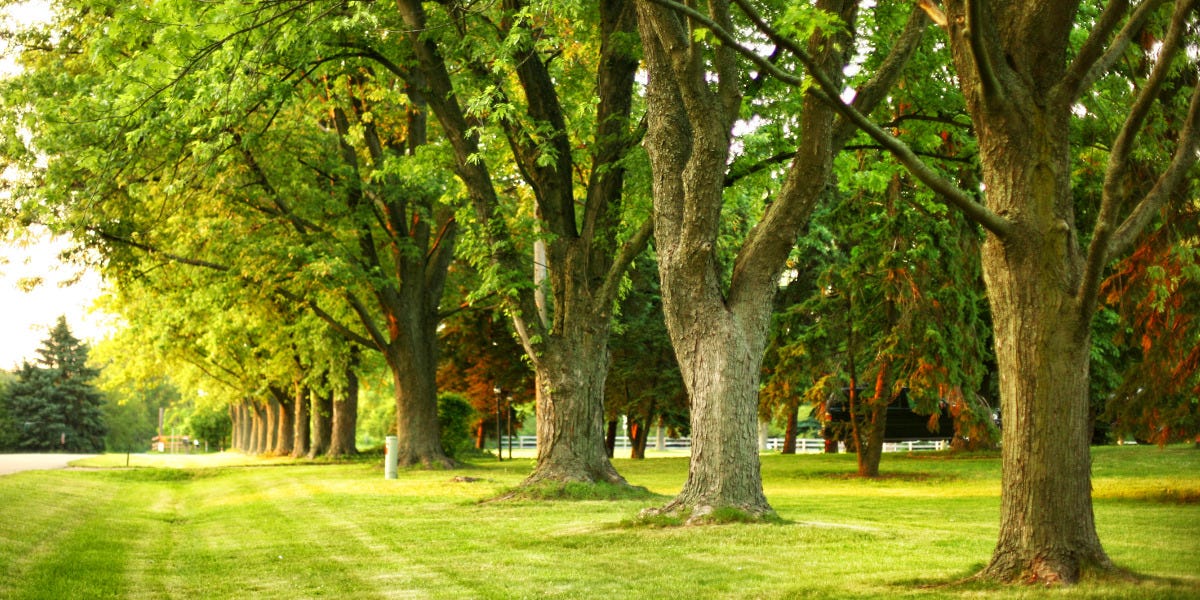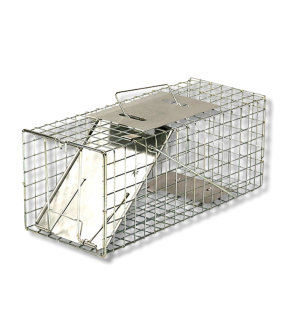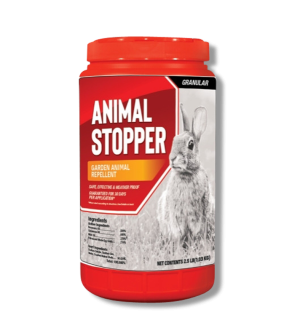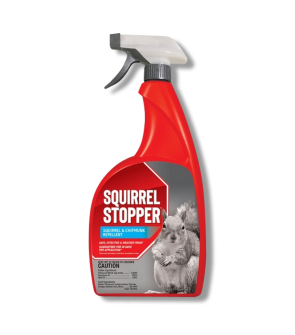Wildlife in Food-Bearing Plants & Trees
Most Effective Products
Common Wildlife in Food-Bearing Plants and Trees
Food-bearing plants and trees can beautify your home’s yard and provide a ready snack, but they can also attract wild animals. Many wild animals will feed on fallen fruits and vegetables underneath these sites or up in the branches. The most common wildlife to do this are opossums, raccoons, and squirrels.
At the same time, these bountiful plants can support nesting and resting sites for these animals to live and breed. They may also live in close proximity to these sites such as underneath structures, which can risk an infestation in your home.
Take a few minutes to read about these common wildlife invaders to maintain and increase your harvest of food with this professional article.
These animals can cause widespread disease either through parasites on their body or through their excrement. Wildlife are naturally filthy and once they come into contact with surfaces that food contacts you, your family, and pets are more at risk.
Another risk is that these animals can be present in these areas during the night, which makes late-night snacks more threatening. Therefore homeowners should deal with these wildlife infestations quickly and swiftly with the steps in our DIY guide.
While following these guidelines, local and state laws are still present and must be followed. It is recommended for the homeowner to visit their local animal control office or state website to visit proper rules and regulations associated with the control of wildlife.
If you are not seeing a pest listed here then contact our customer service team by phone, email, or in-person at one of our store locations for professional recommendations.
Opossums
Opossums are nocturnal, opportunistic creatures that can inflict serious injury to people and animals walking through food-bearing plant and tree sites. These pests are climbers and can damage food plants and trees with their eating and defecation habits.
Identification

Opossums look like large rats with their long, scaly tails and pointed snouts.
However, they are much larger than rats at 2 feet long. They have gray bodies with white tips at the end of their fur, 5 long toes with claws, short ears, and short legs.
Inspection

Opossums will stay in food bearing plants and trees that have hollow tree trunks.
They may also stay in other areas around these areas like surrounding piles of rocks with crevices, brush, firewood piles, or underneath porches, sheds, and other structures.
Treatment
Step 1: Exclusion
The easiest way to deter possums from traveling to food-bearing plants and trees is to install physical barriers.
For foliage that is low to the ground installing chicken wire to enclose it may help to deter opossums. Larger trees that cannot easily be enclosed with a type of tree warp that these animals cannot easily climb.
Galvanized iron metal sheets is something a opossum cannot easily climb. Wrap it around the entire middle section of the tree trunk to stop these animals from climbing up plants.
Trim plants with low hanging or overgrown branches so these animals cannot use this as another way to climb up.
Step 2: Install Trapping
 Trapping and relocating opossums are an option that you can take to remove them from food-bearing plants and trees.
Trapping and relocating opossums are an option that you can take to remove them from food-bearing plants and trees.
Solutions Humane Live Animal Trap is a box style trap that holds small to large animals without physically harming them for both indoor and outdoor sites.
The large size of this trap should be used for possum control.
Make sure there is no fallen fruit or vegetables on the ground to lessen their activity and also encourage these pests to feed on the bait in your traps.
Effective baits for opossums are fish, apples, and honeybus of a combination of all of them.
Be sure to place these traps in areas where the opossum is most likely to walk through and be sure it is not direct sunlight. If it is, then cover the trap with natural vegetation like sticks and leaves to make it less suspicious to these animals.
To set the trap, push on the door lock and lift the door plate. Keep the door plate lifted while pulling the trigger arm forward to set it. You will know it is set when the trigger arm's hook catches the door.
Raccoons
Raccoons are skilled climbers, and they often use this ability to their advantage to gather fruit, nuts, and vegetables that would otherwise be out of reach.
Homeowners reaching into these areas to gather their food may inadvertently come across these aggressive animals, who are known to carry disease and bite.
Identification

Raccoons are medium-sized, stocky animals that measure 24 to 38 inches long. They have a prominent black mask over their eyes and a somewhat bushy, ringed tail.
The feet and paws are long and slender. Most of their fur is gray to brown colored.
Inspection

Raccoons can only sleep and live in food-bearing plants and trees that have open hallows.
If these are not evident, then they will rest in nearby bushes, and fallen logs. Also, in abandoned spaces like cars, sheds, barns, crawl spaces, storm sewers, haystacks, or below piles of rocks.
Treatment
Step 1: Seclude Plants
Racoons can climb almost anything except galvanized metal sheets, which is why it's best to wrap these around your entire tree trunk.
Smaller vegetation that can be entirely closed should be done. To enclose it, install chicken wire around the entire plant, but do not suffocate it.
Prune overgrown stems, branches, and leaves to prevent raccoons from using other methods to enter these areas.
Raking beneath these plants and gathering any fallen food will help to deter these animals. The cleaner the yard and less food available on plants make it less attractive to raccoons.
Step 2: Use Humane Traps

Physical removal of the raccoon will need to be performed with a humane live animal trap like the Solutions Humane Live Animal Trap.
To capture raccoons, use the medium or large size of the trap.
Place these cages along the pathways most used by raccoons such as along structures or in nearby vegetation.
Step 3: Use Repellents
 To keep raccoons away from your food-bearing plants and trees you can use a repellent to deter them.
To keep raccoons away from your food-bearing plants and trees you can use a repellent to deter them.
Animal Stopper Granular Repellent is a humane granular animal repellent that protects edible crops from animals like racoons. Contains no harsh chemicals or blood to repel raccoons and other animals for up to 30 days.
Determine where these raccoons are active by looking for signs of waste, plant destruction, and for the animal burrow.
When you find these sites, apply Animal Stopper Granular Repellent as a perimeter treatment around edible crops.
When applying, ensure that the product does not contact food plants. It may, however, be used on dormant fruit and nut trees.
Reapply every 30 days to continue to repel racoons.
Squirrels
Squirrels will always be attracted to trees and tall foliage, even more so if they produce food. Mainly because they provide safety and immediate food access.
Although it may seem natural, these pests can damage foliage by peeling off plant bark and breaking limbs.
Identification
Squirrels have slender brown to gray colored bodies with bushy tails and large eyes. Their fur looks smooth and silky in appearance. From tail to body they measure about 12 inches in length.
Inspection
Squirrels often build their nests in tree/plant cavities and around branches.
Treatment
Step 1: Control Food Sources

Pick any ripe fruit, vegetables, and nuts from plants as well as any that have fallen on the ground. Be sure to rake away excessive plant debris that have fallen from these foliages.
Bird feeders near these sites can also attract squirrels due to the free food source. Even if you take the feeder away or replace it, there will still be seeds on the ground for them to gather. Complete removal of these objects may be necessary.
Step 2: Fence Trees
Make your food-bearing plants and trees harder for squirrels to climb by installing smooth sheet metal or other appropriate fencing around them.
Wrap your selected fencing around the entire trunk of your plant at least 6 feet high. These animals should not be able to climb up plants with these attachments.
To avoid a squirrel jumping from one tree to another all trees should have this installation. To lessen these odds more, prune overgrown branches, stems, and leaves.
Step 3: Use Repellents
Repellents can be another option to stopping squirrel activity on food-bearing plants and trees.
Squirrel Stopper RTU Spray Repellent is ready to spray liquid animal repellent that squirrels cannot withstand. It will temporarily disrupt their sense of smell, taste, and touch without harm for up to 30 days.
Shake the container well before use.
Create a perimeter treatment around edible plants that are actively growing.
Apply a fine mist around the edible plant, but do not contact the actual plant itself.
Allow 20 minutes for the product to dry before watering of any kind.
Repeat application as needed, usually every 30 days.
Key Takeaways
What Animals Eat Fruit From Trees
- Most common animals to see in and around food-bearing plants and trees are squirrels, possums, and raccoons.
Do Fruit and Food Plants Attract Wildlife
- Yes, wild animals are actively seeking food sources and if it contains food-bearing plants then they can invade.
How to Prevent Wild Animals From Eating Fruit Trees and Food Bearing Plants
- The best thing to do is to install the proper fencing and continually apply repellents as a perimeter application.

















































































































































































































































































































































































































































































































































